|
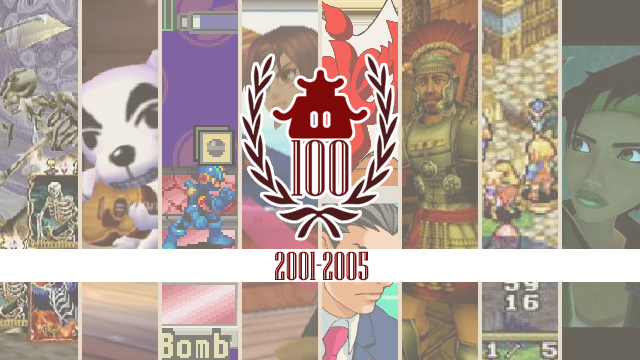 As dire as things may have seemed for the Nintendo 64, its followup, the Nintendo GameCube, would fare even worse– at least, to the layman. After all, Sony continued its console reign with the PlayStation 2 (which would go on to become the best-selling home console of all time), and Microsoft’s Xbox made things a lot tougher for the Big N. But as the idiom goes, “a wounded deer leaps highest,” and Nintendo fought back with some of the strongest games in its entire history. So which of these did we think were the absolute best?
As dire as things may have seemed for the Nintendo 64, its followup, the Nintendo GameCube, would fare even worse– at least, to the layman. After all, Sony continued its console reign with the PlayStation 2 (which would go on to become the best-selling home console of all time), and Microsoft’s Xbox made things a lot tougher for the Big N. But as the idiom goes, “a wounded deer leaps highest,” and Nintendo fought back with some of the strongest games in its entire history. So which of these did we think were the absolute best?
20. Lost Kingdoms (2002)
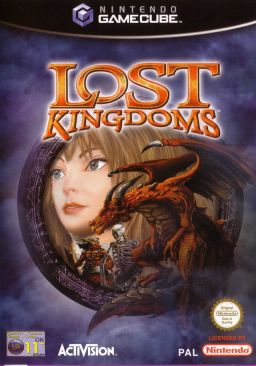
While some of us didn’t get the memo back in 2002 (we were too busy playing Super Smash Bros. Melee), boy, were trading card games booming. Whether it was Yu-Gi-Oh! or Pokémon blasting teenagers out of their seats– both of which are still going strong– the games were in vogue and kids’ parents were in tears. One day, Lost Kingdoms sauntered up to the GameCube exclusive doorstep, and– well– it’s pretty easy to see where this is going. Some might call it a cash-in, except that Lost Kingdoms is so much more than a game based on cards. It’s a game with a female protagonist who neither whines about her role in life nor cries out for a princely savior; it’s a game with puzzles and collection elements that take the best of Monster Rancher and Pokémon; it’s a game based not on a marketing ploy, but on a wide range of cards with genuinely different and interesting effects. While the graphics certainly don’t age as well as they could, and while the somewhat clunky controls left something to be desired even then, Lost Kingdoms is still an interesting game– and a good one.
Why Andrew Hsieh loves Lost Kingdoms…
Even now, in the wake of the extremely successful DS and Wii, it’s not too difficult to harken back to a less optimistic time– one where the GameCube saw few games a year, many of them first- or second-party givens rather than third-party quirks. Lost Kingdoms, though, was one of those rare third-party quirks. Play was simple, and yet somehow revolutionary: playing as a princess on her way to save her father (hello, video game trope twists!) from a mysterious force, you collected cards that could do anything from summon gargantuan beasts to cast mind-shattering sorceries. But you only had a certain number of cards at your disposal at any given time, and you could never control the order in which you drew them; using them willy-nilly, or too sparingly, spelled death more often than not. As if the collection aspect wasn’t enough, Lost Kingdoms‘ cards were associated with elements in a clear rock-paper-scissors formation. They could even evolve, essentially making Lost Kingdoms a real-time version of the Pokémon Trading Card Game, except with a vindictive princess as its protagonist. Sure, the controls were sometimes iffy, and the camera could use a little work, but Lost Kingdoms— and its sequel– proved that third-party games could hold their own, too.
19. Boktai: The Sun is in Your Hand (2003)
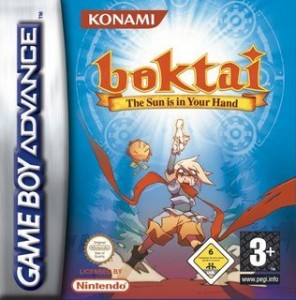
Imagine a time where instead of throwing out completely useless and crazy-looking peripherals willy-nilly, developers actually took the time to design really awesome and crazy-looking peripherals. No, not the e-Reader (though, let’s be honest, that was a pretty cool peripheral)– and not that weird shaky thing that came with Kirby’s Tilt ‘n’ Tumble. Let’s talk about the light sensor that shipped with Boktai: The Sun is in Your Hand. In one of producer Hideo Kojima’s more enlightened decisions (Don’t worry, we’ve told him to stop, or he loses his job. -Ed.), vampire-hunting hero Django wields the mighty Gun Del Sol, which absorbs real sunlight from the sensor on Boktai‘s cartridge in order to destroy in-game vampires. Why, yes, this was the coolest thing to come out on any console that fine year. This essentially made Boktai two games: one, an action game involving conservation of sunlight, and two, a stealth game involving you peeing your pants because you forgot to go outside today. Even better, you can set your time zone within the game, and have the in-game sun rise and set along with the real world. Guess what happens if the sun’s out in-game? Yeah, those vampires don’t have a chance. While this game became popular enough to warrant a sequel, the last in the trilogy– Boktai 3— was totally skipped, leading the way for the final installment to have little to do with the first two games (Lunar Knights). Oh well! Still good.
Why Andrew Hsieh loves Boktai: The Sun is in Your Hand…
Not a whole lot of people played Boktai: The Sun is in Your Hand, which is a shame. One of Hideo Kojima’s few non-Solid Snake-related games, the series that Boktai spawned is one of the more creative ones out there, with none more entertaining than the first in the series. The game forced players to play outside, with a special sensor on the cartridge detecting sunlight, in order to charge up the hero’s gun. With enough sunlight collected, the player could zap vampires into dust, which all things considered, is certainly a visceral way of vampire hunting. Now, this could easily have just been a silly gimmick, perhaps Kojima’s way of telling gamers to go outside and forget all about Metal Gear Solid for once, but Boktai was a lovely little game in itself. That said, later games decided to do away with both the solar sensor and the Boktai name, with Lunar Knights for DS being the final episode. It was unbeatable, of course. After all, how would players kill vampires without sunlight? (Just kidding. But Boktai‘s still cooler.) (Or hotter.)
18. WarioWare, Inc.: Mega Microgame$! (2003)
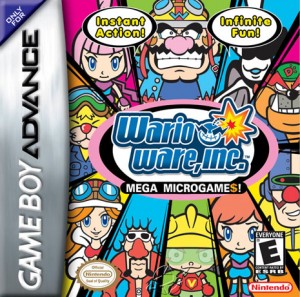
When I’m being psychoanalyzed by Freud sometime in the afterlife, the first thing he’ll ask me, probably, is “tell me about why you play all these stupid video games.” (Well, maybe he’ll ask something else first, but I’ll steer him toward this question.) I’ll tell him, “dude, you gotta try this one out!” And I’ll hand him WarioWare, Inc.: Mega Microgame$! and stalk out, knowing that he’ll have a lot on his plate for the next six hundred years. To imagine the kinds of minds that created the WarioWare series with this one game is to imagine the minds of people who decided that being well-adjusted was overrated. I mean, they’ve got ADHD, or something– easy to tell, considering that the number of games in this supposed singular game is absolutely maniacal. Most of all, though, the developers of Mega Microgame$! actually disregard the notion that minigames are silly games best suited to “casual gamers.” Because playing through all these games at speeds running closer and closer to the speed of light, thinking fast and pressing fast, is something that even alleged hardcore gamers have troube with. Next time you laugh at your friends playing Raving Rabbids, think about the WarioWare series. And then punch yourself in the face.
Why Kyle England loves WarioWare, Inc.: Mega Microgame$!…
WarioWare, Inc. is a truly absurd game, and I am so very glad that Nintendo decided to release it internationally despite how unabashedly Japanese it is. Everything in WarioWare puts a smile on my face— the weird characters, the outrageous situations (realistic nose picking simulations!), and of course the rapid fire twitch gameplay. This game is simply portable perfection. Heck, I even wrote an article discussing why games like this are great for a handheld! Who would have thought that games lasting only seconds could become the most replayable Game Boy games ever? It’s chock full of amazing goodies. My favorite title in Wario’s microgame series is a bit of a toss-up between the first game and WarioWare Twisted!, but the original’s influence can’t be overlooked; it practically created a whole new genre.
17. Animal Crossing: Wild World (2005)
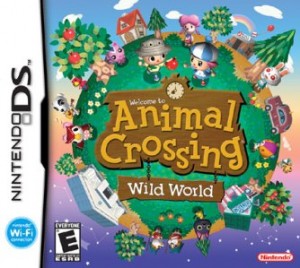
There’s something to be said for how video games can comfort us. Take the right path in that right game and suddenly your world gets that much smaller, that much more comfortable. And if there’s any game with the greatest possibility for comfort, it’s Animal Crossing: Wild World. Oh, sure, Animal Crossing has NES games, and City Folk has … whatever cool stuff City Folk has. But Wild World needs nothing but your DS and, if wanted, an Internet connection with WEP encoding. If you started a town seven years ago, and you’ve since moved to Argentina, no worries– Happyton is still there, waiting for you. And while some villagers might have moved out, others are always waiting for you to return to them. In that sense, Wild World is like the Cheers of the video game world: it’s a place where everybody will always welcome you home, a land where even your most harrying stresses are laid to rest in a bed shaped like a pineapple. Sure, Wild World gets boring sometimes. Everything has to, right? But that’s part of the charm too. You can come and go as you please, and everybody will remain, longing for your return. Even the cockroaches.
Why Katharine Byrne loves Animal Crossing: Wild World…
If there’s one game I’m ever going to associate with my DS, it would be Animal Crossing: Wild World. Apart from Xenoblade Chronicles, I don’t think there’s another game I’ve played so consistently over such a long period of time. Never leaving my DS for an entire year, I almost thought it had fused with the circuit board at one point. There was just something so addictive about digging up fossils and catching fish in the town river that kept me coming back for more, and the more bells I earned, the more I wanted to expand my house and show off all the cool things I’d found. Every day I went out and diligently gathered my fruit harvest, watered my extensive flowerbeds and chatted with the locals, all the while hoping I might see a balloon float across the sky or have a chance encounter with Gulliver and his UFO. So much of its charm was all down to pure chance that I felt like I had to keep playing just so I didn’t miss anything. That and my blatant love affair with Apollo, but that’s a story for another day.
16. Pikmin 2 (2004)
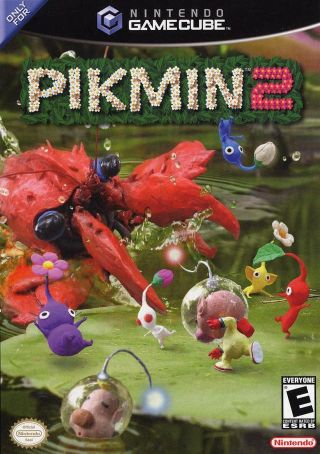
It’s time to discuss one of Miyamoto’s most storied franchises: Pikmin. Wait, what do you mean you don’t remember this game? That is not okay, and that’s why we can’t have nice things. (Read: an earlier Pikmin sequel.) In one of the craziest moves ever, Miyamoto released a brand-new brainchild at GameCube launch, and with Pikmin 2‘s multiplayer and new Pikmin breeds, he only made it better. Pikmin 2 demands more of players and Pikmin both, with greater enemies, crazier hazards, and more stuff. And while it’s a little weird to be throwing Pikmin at each other in multiplayer mode, it’s hard to think of a Pikmin game without it now. Most of all, though, the 30-day-limit was lifted, giving time for players to explore every nook and cranny of the Distant Planet that Isn’t Earth, We Promise. Does that make things a little less urgent? Perhaps. But it shows how much Miyamoto wants you to explore his world, how much players should pay attention to the details. Whereas Pikmin was about the impending possibilities of death, Pikmin 2 is all about discovering new life. “Stop and smell the Pikmin-blossoms, people,” it seems to say. “You’ve got all the time in the world.”
Why Adam Sorice loves Pikmin 2…
Pikmin is a funny old franchise. Whenever I explain the series’ premise to someone (tiny spaceman flies to world of surprisingly servile animal-plant hybrids and tidies up/makes dollar) the general response is either a look of confusion or a dejecting grunt followed by, “That’s so Japanese…” (Well, they’re right. It is.) However, for those bold enough to push past the quirky concept/sheer terror of a bulborb charging at your army; jaws snapping, the Pikmin games offer an undeniably addictive combination of strategy, aesthetics and emotional involvement.
Building on the original, Pikmin 2 removes the pesky time limit of thirty in-game days limit before Olimar croaks it and introduces two new kinds of Pikmin: supersized Purple and ninja-assassin White varieties. However, the army-expanding, object collecting fun only goes on; just as does the sorrow of losing a swathe of beloved Pikmin to a tragic accident. (STOP DROWNING REDS *sobs*)
After a lengthy hiatus, Pikmin is set to return in a third adventure on Wii U, set to be unveiled at next month’s E3 conference. I for one, can’t wait to exploring the Distant Planet yet again, this time in shiny, shiny HD.




 ShareThis
ShareThis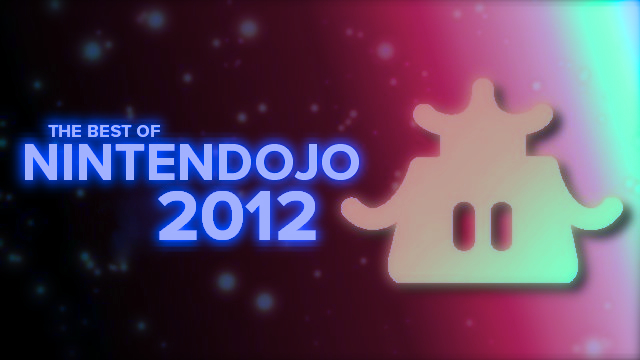








No Metroid Prime? There is something seriously wrong with this list.
Well, all three Primes were lumped together under Trilogy in the next top 20. I do agree that each one deserved its own spot, but considering the sheer amount of games that came out during this time period, some concessions had to be made. :P
Wind Waker definitely was the best game of this era, and third on my list of favourite games ever.
I’ve only played and finished Wind Waker twice, and the last time probably was about 6 years ago…. maybe it’s time to give it another try!